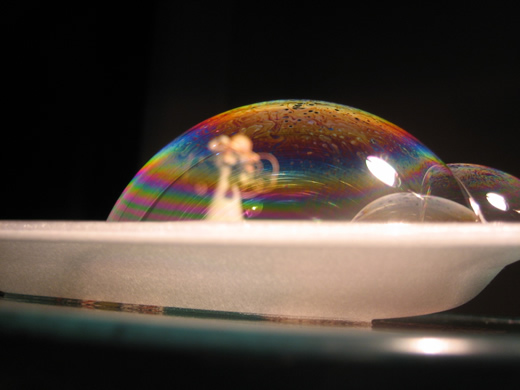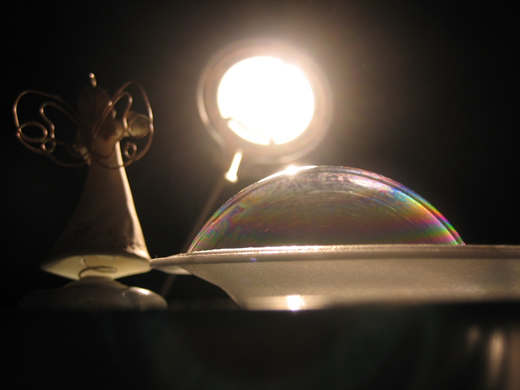 |
P H O T O G R A P H Y C O N T E S T Sponsored by A.J. Hirsch |
Christina
Richmond Hill High School
Honorable Mention
2007 OAPT 4U Photo Contest


Bubble Dome
In a thin film, such as the soap bubble in the photographs, optical interference occurs between light reflected from the upper surface of the film and light reflected from the bottom of the film, as well as through transmitted light. The interference pattern is either constructive (bright) or destructive (dark), depending on the phase difference of the light.
The two photographs illustrate the difference in thin film interference under the reflection and the transmission of light through the bubble. Picture number 1* taken under reflected light displays the bubble with distinctly bright colours such as red and orange, especially at the top of the “dome”, whereas the bubble in picture number 2**, taken under transmitted light, appears dark, with much blue and green. This is the opposite of the result for light reflected from the same thin film. Solely for the purpose of explaining physics principle involved in the situation, assume that the thickness of the film is approaching zero. Under transmitted light, the light waves reflect twice internally in the film, resulting in no phase change, and thus constructively interfere with the other ray of light transmitted through the bubble. Under reflected light, the light waves reflected from the bottom of the film does not undergo a phase change as they move from a slow to fast medium. These waves, then destructively interfere with the inverted light waves reflected from the top of the film. In conclusion, the effect of reflection versus transmission in thin film interference is opposite.
Picture number 1: The reflection of the source of light is seen on the surface of the bubble.
Picture number 2: The source of light and the back of the angle figure can be seen.